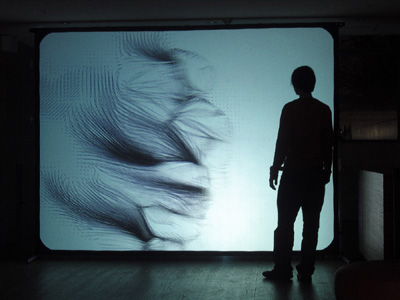-----------------------------------------------------------------
Rob van Kranenburg

RFID as spearheading the pervasive computing revolution
How hard it is to write about a world becoming strange, or new, or spooky, after the dotcom crash, after the high hopes of increasing productivity through IT, of readers and writers becoming wreaders, of liberty finally around the corner: a product to be played out in all kinds of gender, racial and cultural roles, a process to drive decision-making transparency in both offline and online processes. Only to have woken up to the actual realization of a highly synergized performance of search engines and backend database driven visual interfaces. Postmodern theory, open source coding and multimedia channeling promised the production of a new, hybrid space, only to deliver the content convergence of media channels.
And yet, I claim that we are in the progress of witnessing the realization of such a new space. In places where computational processes disappear into the background - into everyday objects - both my reality and me as subject become contested in concrete daily situations and activities. Buildings, cars, consumer products, and people become information spaces by transmitting all kinds of data through RFID that are rapidly replacing the barcode.
We are entering a land where the environment has become the interface, where we must learn anew how to make sense.
In this land we move from our current operational programming rules - to distribute security - towards organizational principles that are guided by the principle of distributing insecurity.

-----------------------------------------------------------------
Pablo Miranda Carranza

Post-human design: architecture after cybernetics.
Design, from the Italian 'disegno' or drawing, condenses since its introduction in the humanist culture of the Renaissance, geometrical form (in the drawing and the final object) and judgement and purpose (of the designer) in a single concept. Design articulates through the rational logic of geometry, the judgements, intentions, creative
epiphanies and more or less fortunate decisions of the designer in to a narrative intelligible to a user.
Catherine Hayles has described as 'post-human' the cultural condition resulting from the control principles identified by cybernetics in the years immediate to the Second World War. These principles, originated in the scientific, economic and industrial culture of the nineteenth century and exemplified in the steam governor, Darwinian evolution or the self-regulation of markets, took human and divine intentional causation literally 'out of the equation' and substituted it instead by the mechanisms of feedback and circular causality. The incorporation of cybernetic technologies and concepts in architecture, from genetic algorithms to interaction, challenges the notion of design as the legible, rational plot set up by the designer: The results of autonomous creative processes follow paths that no longer form intelligible rational sequences, or respond in their stances to any recognisable human logic. What can then be the aesthetics of this 'post-human' condition in architecture and design?
-----------------------------------------------------------------
Ulla-Maaria Mutanen

Ulla-Maaria is a researcher and activist interested in technological
infrastructures, which enable transformations between consumption and production. Based on the Craft Manifesto she will talk about a project that aims at developing the'Long Tail' markets in art, design, and crafting.

-----------------------------------------------------------------